DEAL FOR A WEEK; New Forms & Books
-
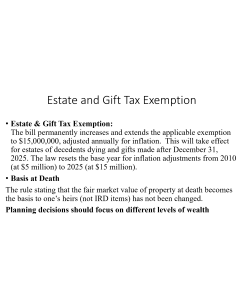 2025 OBBBA: Estate, Trust and Tax Planning (33-Minute Audio & 28-Page Detailed Analysis)$69.00
2025 OBBBA: Estate, Trust and Tax Planning (33-Minute Audio & 28-Page Detailed Analysis)$69.00In this 33-minute August 15, 2025, program, Steven G. Siegel explains selected estate, trust, and tax planning strategies post-2025 OBBBA (One Big Beautiful Bill Act), also known as H.R. 1. This program explains strategies that remain useful under OBBBA, with a focus on income tax basis adjustments and the use of non-grantor trusts to expand use of the 2025 Act tax changes (SALT, 1202, 199A, etc.).
Learn More -
 2025 OBBBA: Income Tax Planning (1-Hour Audio & 40-Page Detailed Analysis)$69.00
2025 OBBBA: Income Tax Planning (1-Hour Audio & 40-Page Detailed Analysis)$69.00In this 1-hour August 12, 2025 program, Steven G. Siegel explains selected income tax provisions of the 2025 OBBBA (One Big Beautiful Bill Act), also known as H.R. 1, and provides important planning suggestions for those provisions.
FREE ~ 5 MINUTES: To hear - for free - approximately five minutes of this audio presentation by Mr. Siegel, please click here: 5 Minutes FREE.
Learn More -
 5 Accumulation Trusts (5 Trusts, 86 Pages)Special Price $249.00 Regular Price $315.00
5 Accumulation Trusts (5 Trusts, 86 Pages)Special Price $249.00 Regular Price $315.00Here Are The 5 Accumulation Trusts Included:
Learn More -
 Discretionary Accumulation Trust (14 Pages)Special Price $85.00 Regular Price $99.00
Discretionary Accumulation Trust (14 Pages)Special Price $85.00 Regular Price $99.00This Form of an IRA and Retirement Plan Beneficiary See-Through Trust is designed to distribute the Grantor’s Retirement Plans, qualified plans as well as IRAs, to a trust as the designated beneficiary of the Retirement Plans for the lifetime benefit of a child of the Grantor. The required minimum distributions rules must be observed, and the Trustee is authorized in its discretion to make payments to the Beneficiary as well as to the spouse and children of the Beneficiary. Provision is also made for additional issue of the Beneficiary.
Learn More -
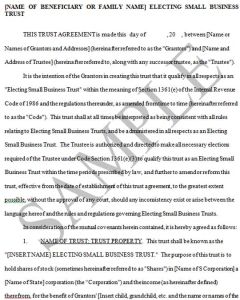 Electing Small Business Trust (13 Pages)Special Price $59.00 Regular Price $69.00This Trust is an Electing Small Business Trust, i.e. a Trust created to follow the rules and requirements that allow this Trust to be treated as a valid S corporation shareholder. The Electing Small Business Trust is often used in estate and/or income tax planning where S corporation owners wish to transfer some of the S corporation shares, but do not wish their children to gain any control over the corporation (hence no outright transfer) or be obliged to receive annual distributions of income (as would be the requirement if a Qualified Subchapter S Trust were created). The “ESBT” allows more control of the stock and its income by the Trustee. The Trust may also hold property other than the shares of an S corporation.Learn More
Electing Small Business Trust (13 Pages)Special Price $59.00 Regular Price $69.00This Trust is an Electing Small Business Trust, i.e. a Trust created to follow the rules and requirements that allow this Trust to be treated as a valid S corporation shareholder. The Electing Small Business Trust is often used in estate and/or income tax planning where S corporation owners wish to transfer some of the S corporation shares, but do not wish their children to gain any control over the corporation (hence no outright transfer) or be obliged to receive annual distributions of income (as would be the requirement if a Qualified Subchapter S Trust were created). The “ESBT” allows more control of the stock and its income by the Trustee. The Trust may also hold property other than the shares of an S corporation.Learn More -
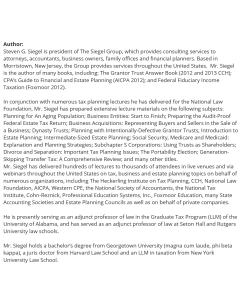 Essential Estate Planning Forms (59 Forms, 648 Pages)$1,499.00
Essential Estate Planning Forms (59 Forms, 648 Pages)$1,499.00Scroll down to read the list of included forms.
SAVE and establish or expand your library with Essential Estate Planning Forms (59 Forms, 648 Pages).
Reference these forms to save drafting time and compare how Steve Siegel drafts his documents. See the detailed description for the list of included forms. Each form is fully editable and yours for immediate and unlimited use upon purchase.
Learn More -
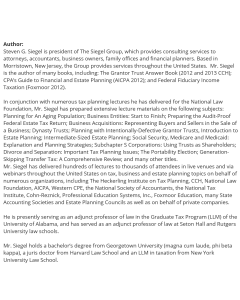 Sophisticated Estate Planning Forms (32 Forms, 674 Pages)$1,499.00
Sophisticated Estate Planning Forms (32 Forms, 674 Pages)$1,499.00Scroll down to read the list of included forms.
Sophisticated Estate Planning Forms (32 Forms, 674 Pages) is a cost-effective opportunity to establish or expand your library.
Reference these forms to save drafting time and compare how Steve Siegel drafts his documents. Each form is fully editable and yours for immediate and unlimited use upon purchase.
Learn More -
 Spousal Lifetime Access Trust (SLAT) (30 Pages)Special Price $129.00 Regular Price $159.00
Spousal Lifetime Access Trust (SLAT) (30 Pages)Special Price $129.00 Regular Price $159.00The intent of the SLAT is to have a spouse create a significant trust (funding it with as much (or all) of the donor’s lifetime transfer tax exemption as the donor is willing to use) for his or her spouse without qualifying the trust for the gift tax marital deduction. This makes the gift “taxable”, but if capped at or below the lifetime transfer tax exemption, no transfer tax will be due. The donee spouse will be entitled to income and principal from the trust, but the trust property will not be included in the estate of the donee spouse. When the donee spouse dies, the children of the spouses become the trust beneficiaries, either with outright distributions, or with the trust property being held in further trust. The donor spouse has now used his or her transfer tax exclusion before it may be lost in future legislation, and has removed significant property from transfer taxation over two deaths. Note that this trust is designed as a grantor trust (Article 18th), so that the donor-grantor is taxed on the trust income, but the grantor will not have an estate inclusion since the grantor powers are intentionally not extensive. If the grantor trust characterization is not desired, Article 18th can be removed.
Learn More -
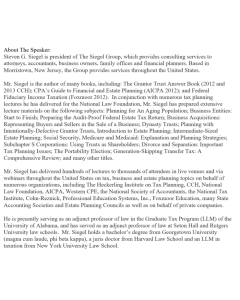 Spousal Lifetime Access Trusts (SLATs): The Popular Estate Planning Tool (1-Hour Audio)Special Price $99.00 Regular Price $139.00
Spousal Lifetime Access Trusts (SLATs): The Popular Estate Planning Tool (1-Hour Audio)Special Price $99.00 Regular Price $139.00SLATs have become the hottest topic in estate planning for many clients, not just the very wealthy.
Learn More
IMPORTANT: This 1-Hour Audio is available for CLE credit on our sister sites. To take this course for online study go to www.NLFonline.com. To take this course on Audio CD, Flash Drive or by Email Delivery go to www.NLFcle.com. Only purchase the audio from this website, www.NLFforms.com, if you do not want CLE credit for this program.
Mr. Siegel's fully-editable SLAT form is available here: Spousal Lifetime Access Trust (SLAT) (30 Pages). It is not included with the one-hour audio program.
